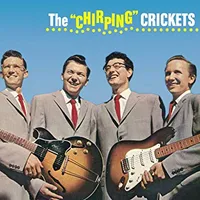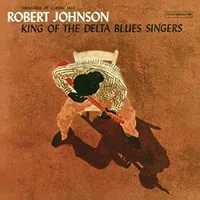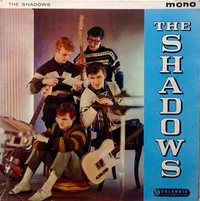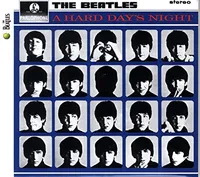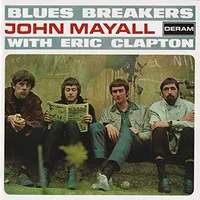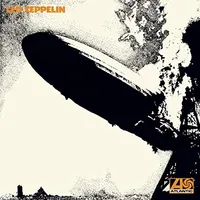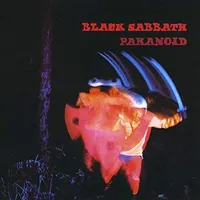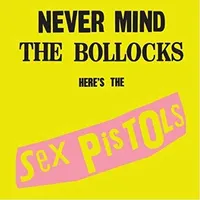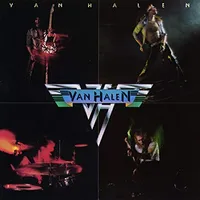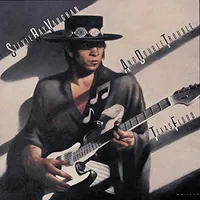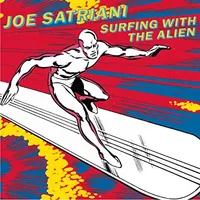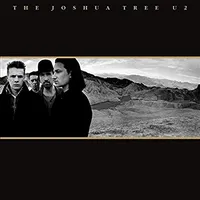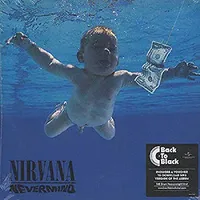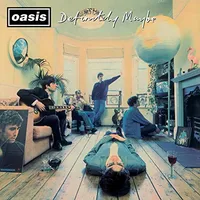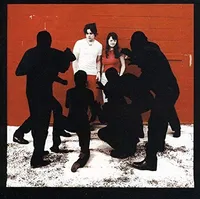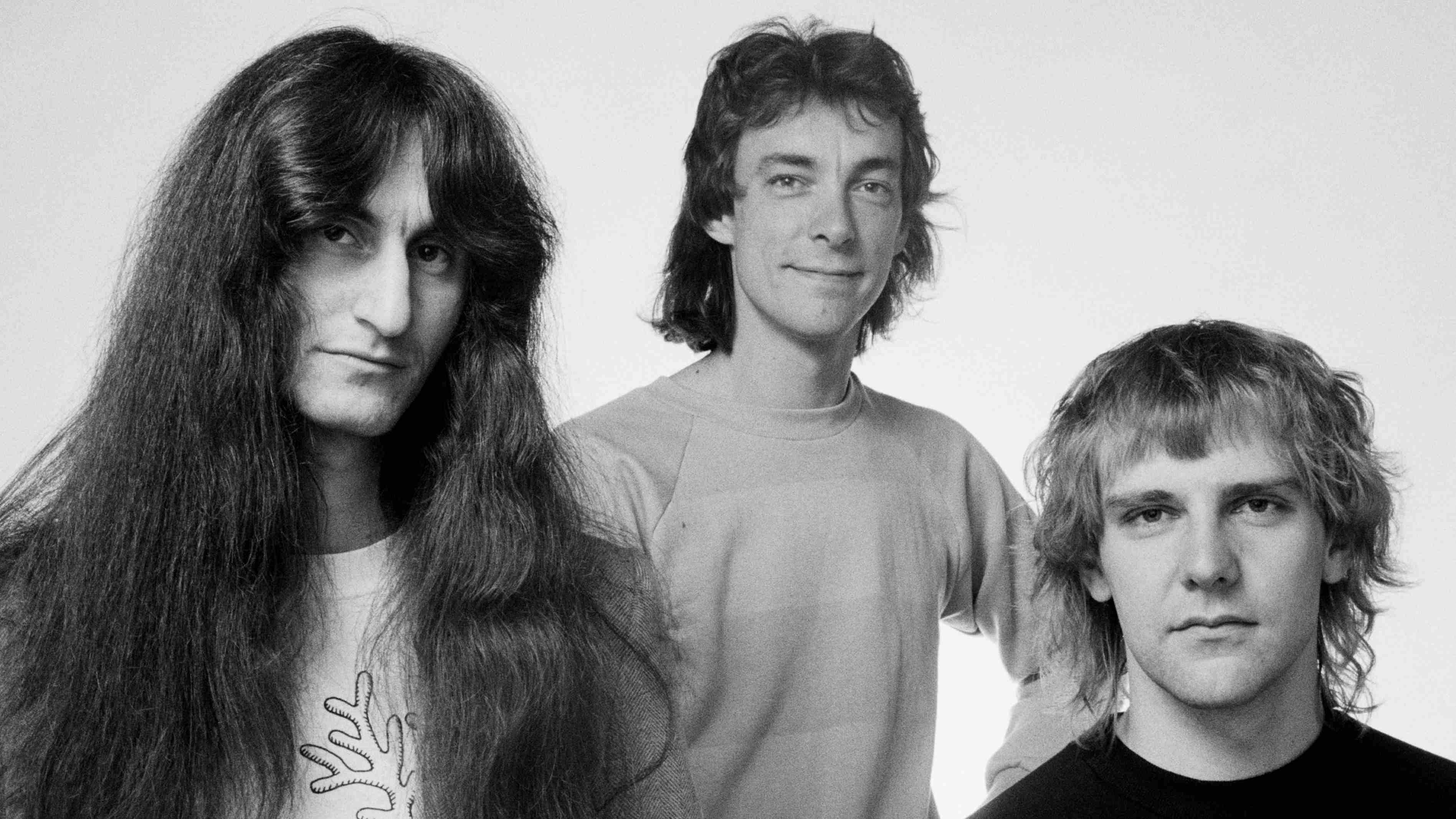21 Albums That Changed The Way We Play Guitar
Game changers: 21 albums that shifted the way rock musicians approached the guitar, 1956-2001
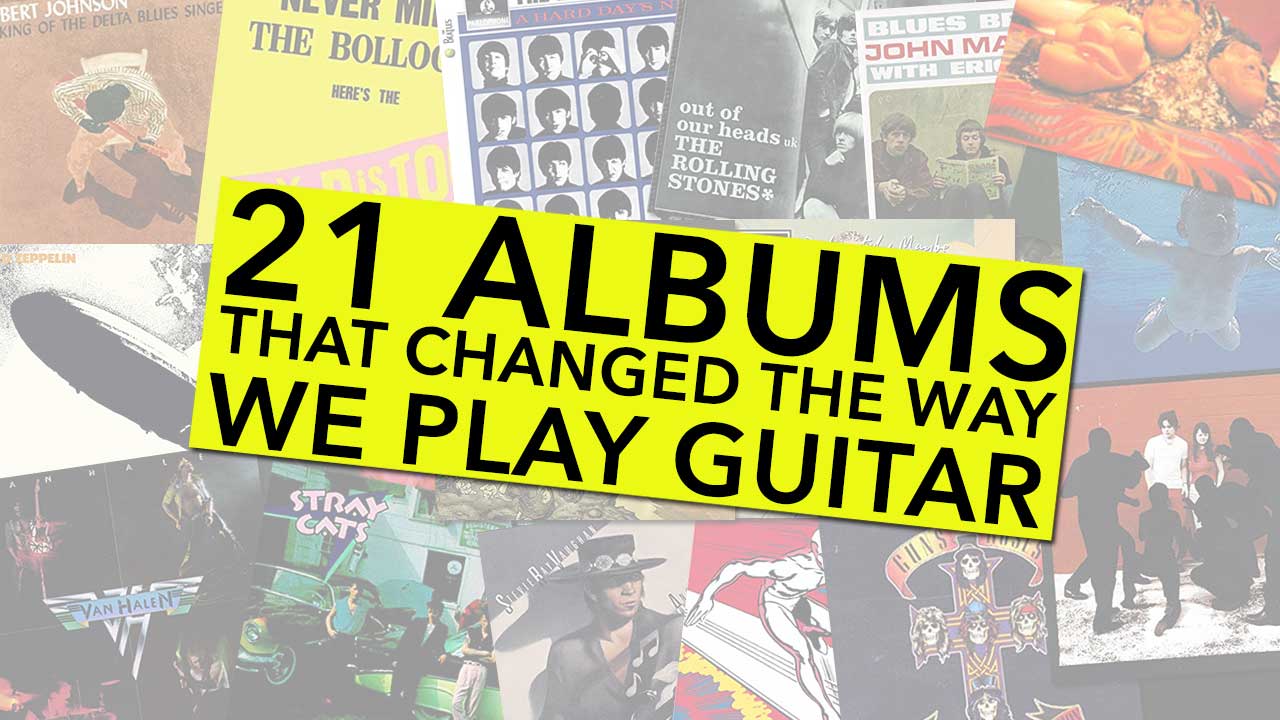
From Buddy Holly teaching the kids to covet the Fender Stratocaster, to George Harrison pioneering American folk rock and Sex Pistol Steve Jones schooling us on rhythm guitar, some guitarists – and, of course, their albums – had the power to change the world.
They shifted musical tastes, killing one genre and replacing it with another. Rock’n’roll inflicted genocide on country, grunge devastated hair metal, and Oasis steamrolled over everything. These records dictated what we wore, how we spoke and, yes, even the drugs we took.
In this feature we take a chronological look at 21 albums that not only impacted on popular culture, but also changed the way guitarists played and influenced the equipment they used.

1. Elvis Presley - Heartbreak Hotel (1956)
You can trust Louder
Elvis Presley - Heartbreak Hotel (1956)
For a generation of post-war British kids, Heartbreak Hotel was the rock’n’roll equivalent of the moment in The Wizard Of Oz when everything switches from black-and-white to colour. In the midst of a slow blues, Scotty Moore’s guitar solo came at the listener like a slashing switchblade.
Music critics hated the track, as did parents, the BBC and the establishment in general – which just made the kids love it even more. Before the EP’s UK release in May 1956, the average teenaged boy wanted to be a footballer, boxer or steam train driver.
As it made its way to No.2 in the chart, suddenly they were pestering their parents for guitars and putting groups together. Two such young oiks, John Lennon and Paul McCartney, would later acknowledge Heartbreak Hotel as a defining moment in the birth of The Beatles.
2. The Crickets - The “Chirping” Crickets (1957)
The Crickets - The “Chirping” Crickets (1957)
The Crickets’ debut record exploded like a bomb in the UK when it was released here in 1958. It wasn’t just songs such as That’ll Be The Day, Oh, Boy! and Not Fade Away that drove kids out of their minds, the disciples also fell in love with the band’s leader, Buddy Holly.
Bespectacled and geeky, Holly was the average-looking kid who showed his teenage followers that you didn’t have to be pretty like Elvis, as cool as Eddie Cochran or as dangerous like Gene Vincent to be a rock star.
The cover of The “Chirping” Crickets also gave Buddy’s British fans their first ever glimpse of a sunburst Fender Stratocaster, a guitar that looked so futuristic to them it could have fallen out of a passing flying saucer. The 60-year British love affair with the Strat begins here.
3. Robert Johnson - King Of The Delta Blues Singers (1961)
Robert Johnson - King Of The Delta Blues Singers (1961)
King Of The Delta Blues Singers is a Columbia Records compilation album of sides recorded by Robert Johnson in November 1936 in San Antonio, Texas and June 1937 in Dallas, Texas.
By the time of the album’s early-60s release, Johnson was a forgotten figure. He was subsequently reimagined as some wailing apparition who sold his soul to the Devil in exchange for fame and fortune, only to be denied both in his short lifetime.
Bullshit folklore aside, the bones of Johnson’s legacy are his highly accomplished guitar playing and songwriting. Both helped fuel the British blues-rock boom of the 1960s with interpretations of his songs by Cream (Cross Road Blues), Led Zeppelin (Traveling Riverside Blues) and the Rolling Stones (Love In Vain).
When Keith Richards first heard Johnson’s recordings he thought he must be part of a duo: “It took me a long time to realise he was actually doing it all by himself.”
4. The Shadows - The Shadows (1961)
The Shadows - The Shadows (1961)
They might have been the backing band for pseudo-Elvis Cliff Richard, with a lead guitarist who looked like Postman Pat, but The Shadows were the biggest thing in Blighty in the pre-Fab early 60s. Their debut album has Hank Marvin beasting away on the first ever Fender Stratocaster imported into the UK.
The band were also instrumental in the development of the greatest British guitar amplifier of all time, the Vox AC30. When the guys couldn’t be heard above the screams of their adoring teen audiences, they turned to Vox engineer Dick Denney for help. The solution was an amp with twice the power and speakers of their existing AC15.
The AC30 went on to become the sound of Beatlemania, and later still was the preferred amp of Queen’s Brian May and Jam-era Paul Weller.
5. The Beatles - A Hard Day’s Night (1964)
The Beatles - A Hard Day’s Night (1964)
Recorded as the soundtrack to the film of the same name A Hard Day’s Night captures John, Paul, George and Ringo at the height of Beatlemania. The album also introduced the world to the sound of George Harrison’s Rickenbacker 12-string.
He was gifted the 360/12 model by Rickenbacker grande fromage FC Hall during the group’s first visit to America, and its chiming sound was all over much of A Hard Day’s Night and later Beatles records including 1965’s Rubber Soul.
Pretty much everything a Beatle said or did was influential, and Harrison’s ‘Ricky’ sound was soon adopted by Roger McGuinn of US folk-rock band The Byrds, who in turn inspired people such as Tom Petty, Johnny Marr of The Smiths and Peter Buck of R.E.M.
Fun fact: the Rickenbacker 620/12 on the cover of Petty’s Damn The Torpedoes was the next 12-string off the production line after George’s 360/12.
6. The Rolling Stones - Out Of Our Heads (1965)
The Rolling Stones - Out Of Our Heads (1965)
The riff that kicks off (I Can’t Get No) Satisfaction changed the world of guitar overnight. Keith Richards actually wanted a horn section to play the riff. He laid down a guide with a Maestro FZ-1 Fuzz-Tone pedal, and the effect was so good that the band wouldn’t let him change it.
Previous attempts at distortion had seen proto-punk rocker Link Wray poke holes in his speakers back in the late 50s, while Dave Davies of The Kinks slashed his speakers with a razor blade for the band’s You Really Got Me riff.
Thanks to Keith, fuzz boxes flew off the shelves, and soon a generation of American kids formed garage bands and sowed the seeds of hard rock and punk.
7. John Mayall's Bluesbreakers - John Mayall’s Blues Breakers With Eric Clapton (1966)
John Mayall's Bluesbreakers - John Mayall’s Blues Breakers With Eric Clapton (1966)
Better-known as the Beano Album, this record has been scrutinised more closely than the Dead Sea Scrolls.
This album is the reason why Joe Bonamassa spends all his pocket money on vintage Les Pauls. It was at the root of Gary Moore’s desire to dump metal and rediscover the music that inspired him as a kid on 1990’s Still Got The Blues. Eric Clapton changed rock history with this record.
Playing a Gibson Les Paul Standard – turned up very loud through a Marshall combo – would lead to players such as Peter Green and Jeff Beck following his lead.
Thanks to the Beano and its disciples, the single-cutaway Les Paul guitar, which was discontinued in 1960 in favour of the SG, was reintroduced by Gibson in 1968.
8. The Jimi Hendrix Experience - Are You Experienced (1967)
The Jimi Hendrix Experience - Are You Experienced (1967)
The Jimi Hendrix Experience’s debut album is notable for a load of reasons, not least because it saved the ass of the Fender Stratocaster. While never discontinued like the Gibson Les Paul, the Strat’s popularity had dwindled since its glory days of the early 60s.
Then Jimi happened and suddenly everyone was looking for a Strat. Not that it stopped him killing off a few for kicks. The spectacle of Hendrix dry-humping one against a Marshall stack then burning it alive as it howled its last brings tears to any vintage guitar collector’s eyes.
While Jimi has helped shift countless guitars for Fender since his untimely demise, his use of wah-wah and fuzz effects was equally influential on fledgling rockers – not to mention 70s porno soundtracks.
9. Led Zeppelin - Led Zeppelin (1969)
Led Zeppelin - Led Zeppelin (1969)
We’ll wager your classic image of Jimmy Page in action is bare-chested, dragon suit, hair like a burst mattress… and a low-slung sunburst ’59 Les Paul Standard hanging at scrotum level.
For years, guitarists assumed that Jimmy played a Gibson on everything, yet on much of the first Led Zeppelin album he got those classic ‘Les Paul’ tones with the same ’59 Fender Telecaster he beat on in The Yardbirds, through an old, heavily modified Supro 1695T Coronado combo and a MK II Tone Bender fuzz.
This album defines the moment British blues shifted gears into hard rock. It’s a sound that guitar geeks are still trying to nail today. He later used the same Tele and Supro amp to record the solo on Stairway To Heaven.
10. Black Sabbath - Paranoid (1970)
Black Sabbath - Paranoid (1970)
You can’t really talk about the effect that Tony Iommi had on metal guitar without mentioning his missing fingertips. Iommi was involved in an industrial accident at a sheet metal factory, slicing off the ends of the ring and middle fingers of his right hand.
“It made me more aware of my limitations,” he told Classic Rock. “You know, things that I could do before the accident and couldn’t do after. I tried to make up for it and make my sound bigger.”
As Paranoid reveals, Iommi not only developed a huge sound, he also wrote the blueprint for metal guitar playing. What’s interesting is that his monstrously heavy tone wasn’t compromised by his need to use very light guitar strings. That’s a slap in the chops for the ‘heavy strings equals heavy tone’ brigade.
11. Sex Pistols - Never Mind The Bollocks (1977)
Sex Pistols - Never Mind The Bollocks (1977)
Pistols manager Malcolm McLaren’s oft-quoted desire to find “four kids, make sure they hate each other, make sure they can’t play” might have made good PR, but it didn’t exactly come to pass.
Alright, the Pistols might not have got on that great, but drummer Paul Cook, original bassist Glen Matlock and guitarist Steve Jones could clearly play; Jones’s roaring Les Paul Custom/Marshall stack sound on Never Mind The Bollocks influenced everyone from Guns N’ Roses to Rancid to Oasis.
Jones is the most underrated guitarist this side of Paul Weller, his rhythm playing as tight as a drum. Shame it all went to shit when Sid Vicious replaced Matlock and the Pistols took on America but hey, we’ll always have Jonesie’s opening salvos on God Save The Queen and Pretty Vacant for inspiration.
12. Van Halen - Van Halen (1978)
Apart from the fact that Van Halen completely tore up the rock-guitar rule book on its release, the album changed the way people thought about their gear. The 80s saw the rise of the ‘super-Strat’, a guitar with a Gibson-style humbucking pickup chiselled into the bridge position of a Fender body. Eddie Van Halen was the mastermind behind that concept.
As far back as the mid-70s he’d been trying to create a guitar with the power and tone of a Gibson and the lighter twin cutaway body and slim maple neck of a Stratocaster. The result, the ‘Frankenstrat’, lit the way for guitar companies like Kramer – with whom EVH collaborated – Charvel, Jackson and Ibanez who created their own variations on Eddie’s theme.
Suddenly we had the tools to play faster and flashier. No guitarist had such an influence on how and what we played since artist/ inventor Les Paul in the 1950s.
13. Stray Cats - Built For Speed (1982)
Stray Cats - Built For Speed (1982)
The Stray Cats’ debut US album, Built For Speed is actually a compilation of their two ’81 UK records Stray Cats and Gonna Ball. Released at a time when shred guitar was thriving, Brian Setzer’s incendiary guitar chops on Stray Cat Strut, Runaway Boys and Rumble In Brighton fuelled a renewed interest in 50s rockabilly and big, orange Gretsch guitars.
Influenced by the look and sound of original rocker Eddie Cochran, Setzer sniffed around for a Gretsch G6120 Chet Atkins like his hero’s and picked up a ’59 model for a couple of hundred dollars. Gretsch Guitars had ceased production in the US in 1981, but thanks to Setzer championing the brand it was reborn in Japan in the 90s.
As a reward, Setzer became the first guitarist since Chet Atkins to become a Gretsch signature artist.
14. Stevie Ray Vaughan & Double Trouble - Texas Flood (1983)
Stevie Ray Vaughan & Double Trouble - Texas Flood (1983)
This record should really be included in the sale of every new Strat, as it represents the tone of that model at its absolute best.
Blues music was pretty much on its uppers in the early 80s, almost entirely absent from the mainstream. Then along came Stevie Ray Vaughan, a young hot-shot guitarist who managed to recast blues in his own image. This was Texas blues, hotter, flashier and more passionate than the overproduced stuff that even greats such as BB King and Buddy Guy were perpetrating at that point.
This album saved the blues then, and continues to do so thanks to the kids with Strats who followed in its wake.
15. Joe Satriani - Surfing With The Alien (1987)
Joe Satriani - Surfing With The Alien (1987)
You couldn’t move for guitar instrumental albums in the mid-to-late 80s. There was the serious shred stuff coming out on Shrapnel Records, such as Racer X, Vinnie Moore and Marty Friedman.
But as talented as all these guys were, it all seemed so niche and unlikely to trouble the mainstream charts. Then Joe Satriani scored a monster hit with Surfing With The Alien. Combining jazz fusion with visceral rock’n’roll,
Surfing made great guitar technique cool again and showed that an instrumental album could be a commercial possibility for the first time since the surf craze in the early 60s. Even Satriani was taken aback by its success.
16. Guns N' Roses - Appetite For Destruction (1987)
Guns N' Roses - Appetite For Destruction (1987)
“I didn’t fuckin’ reintroduce the Les Paul,” Slash told Guitar Shop magazine in 1996. “It’s been around. I just don’t think that anybody who was really popular and touring worldwide was using Les Pauls around the time Guns came out.”
To be fair, players such as doomed Ozzy protege Randy Rhoads and Thin Lizzy/Whitesnake/Blue Murder man John Sykes had kept the Les Paul Custom afloat in a sea of ‘super-Strats’ in the 80s. Yet, despite his protests and modesty, it was Slash who made the Les Paul Standard cool again. Gary Moore would seal the deal with his Les Paul love letter Still Got The Blues in 1990.
Fun fact: despite the fact that has Gibson benefited hugely from Slash’s Les Paul use on Appetite, the guitar featured on much of the record was in fact a copy built by luthier Kris Derrig.
17. U2 - The Joshua Tree (1987)
Years before U2 singer Bono started charging punters good money to sit through his tiresome sermons, his band created magic on tracks like Where The Streets Have No Name, With Or Without You and I Still Haven’t Found What I’m Looking For.
A big part of the success of the band’s The Joshua Tree album was guitarist The Edge’s command over delay effects. They were key to pretty much every tune he played at that time, to the point where some wags suggested he couldn’t do anything without them. For many guitarists, The Edge’s work on The Joshua Tree gave them the inspiration to start indulging in effects.
This was the golden age of the rack-mounted effects unit, when cheap pedals were ditched in favour of expensive digital things with giant foot boards. In those days you did anything you could to give yourself the edge.
18. Nirvana - Nevermind (1991)
Yep, the album that slapped the taste out the mouth of hair metal. When Nirvana took over in the early 90s, many guitarists saw the writing on the wall and traded in their super-Strats for Fenders.
Flannel and denim replaced spandex and hair spray, and you needed old-school guitars to look and sound the part. Kurt Cobain ostensibly picked up old Fender Jaguars and Mustangs because they were cheap.
Thanks to Kurt, the days of cheap Mustangs are long gone. He did, however, design his own version before he checked out: a Jaguar/Mustang DNA-splice called the Jag-Stang.
19. Oasis - Definitely Maybe (1994)
Oasis - Definitely Maybe (1994)
Anybody who worked in a music shop in 1994 can attest to the impact Oasis had on the guitar market that year. Noel Gallagher and fellow guitarist Paul ‘Bonehead’ Arthurs triggered a stampede for the Epiphone Les Paul and semi-acoustic Riviera models they used in those early days.
The climate was right for a new sound, and the Gallaghers barged right in. Kurt Cobain was dead and pop music was in limbo. Then, love ’em or not, the louts from Manchester rolled up with their Beatles/Pistols mash-up and gave everyone a kick up the arse.
It was the perfect scene to get kids playing guitars again with easy-to-play tunes and affordable gear. Guitar shops owners dream of the next big thing like Oasis coming along. We’re still waiting.
20. Korn - Follow The Leader (1998)
Korn - Follow The Leader (1998)
Just when it looked like metal was on its arse, a new breed of American groups pushed through with pointy guitars, drop tunings and a load of facial hair: nu metal. After a couple of well-received albums – debut Korn in 1994, and 1996’s Life Is Peachy – Follow The Leader went mainstream and hit US No.1 in the week of its release.
Guitarists James ‘Munky’ Shaffer and Head (Brian Welch to his mum) are long-time Ibanez users were key players in the growing popularity of seven-string guitars, and had a signature model called the K7. These sevenstrings came set up to Korn signature tuning (low to high: A, D, G, C, F, A, D) from the Ibanez factory.
The K7 was subsequently replaced in the Ibanez catalogue by the Apex model, a guitar still used by Munky.
21. The White Stripes - White Blood Cells (2001)
The White Stripes - White Blood Cells (2001)
In the 90s and noughties, the accepted procedure for aspiring blues players was to be white, young and play a Fender Strat – no exceptions. It took a young man from Detroit, Michigan, Jack White, to beat the boredom out of blues with a noisy garage rock approach.
White wasn’t the first to have a pop – artists such as RL Burnside and Jon Spencer’s Blues Explosion had been curating the music’s raw origins for years. White was just more successful at it, and the huge mainstream success that came with the release of his band the White Stripes’ 2001 album White Blood Cells created a new enthusiasm for prehistoric blues and old, pawnshop prize guitars.
Thanks to the exposure he gave his red 1964 Airline ‘JB Hutto’ guitar, originally sold by Montgomery Ward department stores, the model is now considered a valuable vintage classic. White proved that all you needed to change the world was an old guitar, a fuzz box and a drummer.
Sign up below to get the latest from Classic Rock, plus exclusive special offers, direct to your inbox!

Ed Mitchell was the Editor of The Blues Magazine from 2012-16, and a contributor to Classic Rock and Louder. He died in October 2022, aged 52. A one-time Reviews Editor on Total Guitar magazine from 2003, his guitar-modding column, Ed’s Shed, appeared in print on both sides of the Atlantic (in both Total Guitar and Guitar World magazines), and he wrote stories for Classic Rock and Guitarist. Between them, the websites Louder, MusicRadar and Guitar World host over 400 of his articles – among them interviews with Billy Gibbons, Paul Weller, Brian Setzer, profiles on Roy Buchanan, Duane Allman and Peter Green, a joint interview with Jimmy Page and Jack White, and dozens of guitar reviews – and that’s just the ones that made it online.

